Andamooka Matrix Opal
17 January 2013 by Johno
Categories: Opal Types | Opal Treatments | Australian Opal
The term matrix opal refers to a type of opal where there is a base stone with tiny pieces of brilliant opal interspersed within this base stone. The base can be limestone, sandstone or even ironstone. At Andamooka and apparently nowhere else in the world, two types of matrix opal are found. One is called Andamooka Matrix and the other is now called Rainbow Opal Matrix.It used to be called "concrete" as this is exactly what it looks like. A limestone and sandstone matrix is found in Queensland and is called Boulder Opal.
Andamooka Matrix is a fine grained limestone with precious opal embedded in it in all sorts of patterns. It has some porosity which is important as we shall see. As the limestone is quite a pale colour the opal is not all that clearly seen by the naked eye and it is very easy to discard a piece unless you look at it very carefully. Some time ago, someone discovered that if you cook the matrix in a sugar solution so that this sugar fills as many of the pores as possible and then use acid or heat to turn the sugar into carbon, then the true opal colours really stand out.
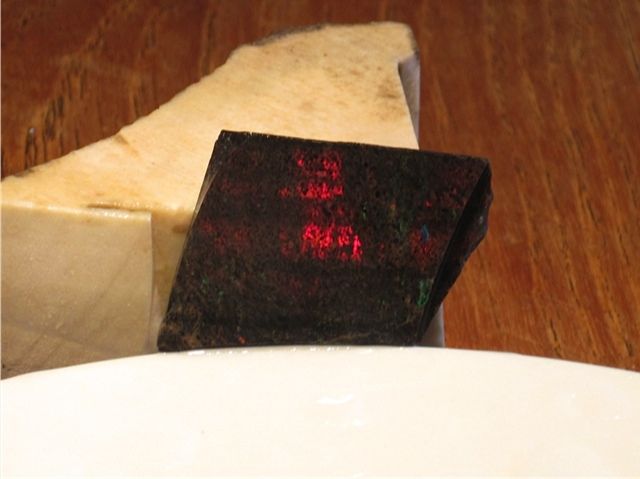
The photo above shows a large piece of untreated matrix with very little colour showing next to a slice of the same stone which has been treated with sugar and acid. The colours brought out by the treatment are amazing. It is hard to believe they are from the same stone. The treatment does not alter the opal, it merely changes the background colour so the opal can clearly be seen. This opal has a tight surface and polishes very well, however all matrix pieces are not as good. Some pieces are quite porous and you can see the tiny pits on the surface. These will not polish all that well.
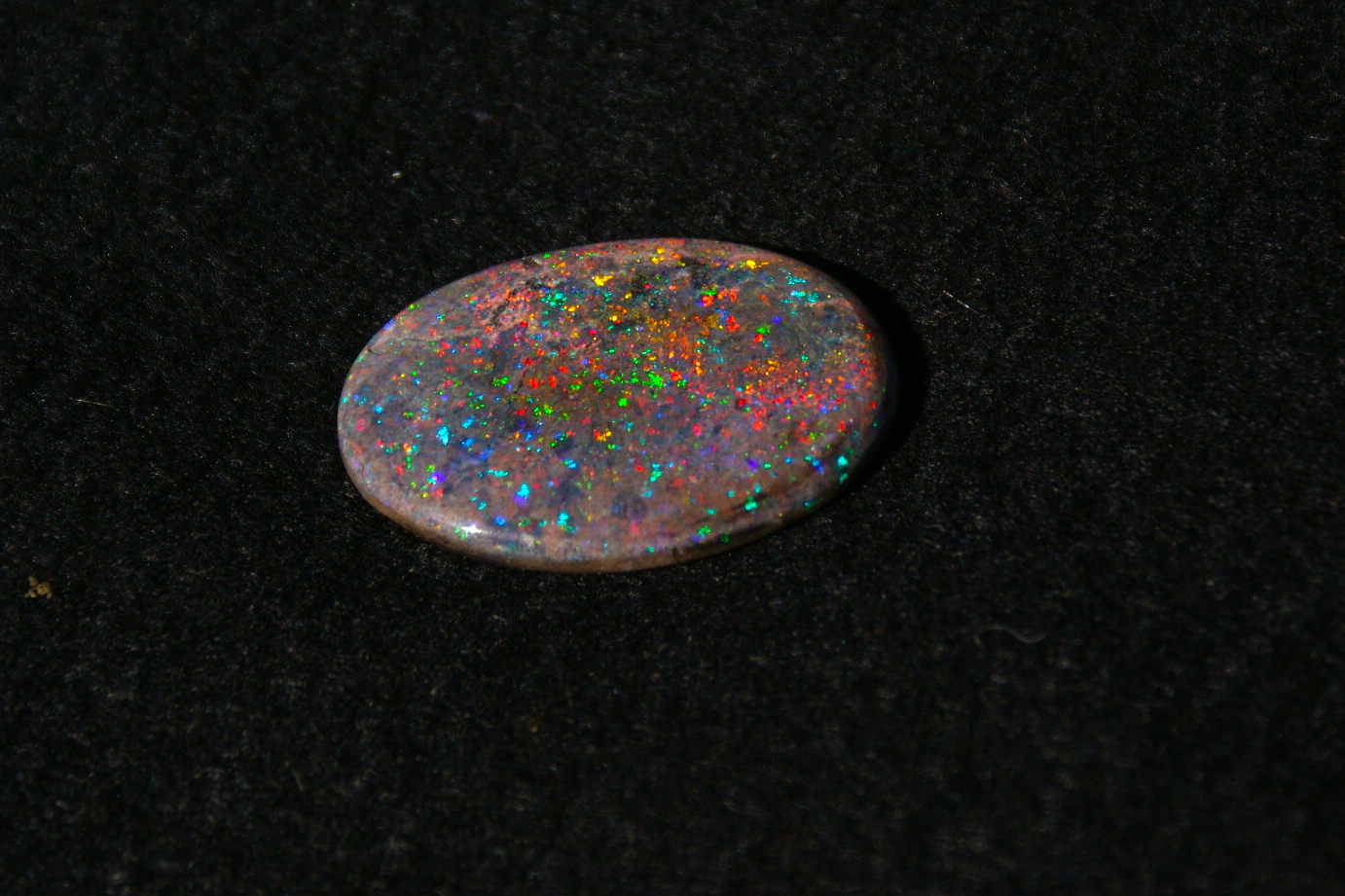
This is another piece of beautiful matrix opal showing some amazing colours.
I have written a post on treating Andamooka Matrix and it includes a good link which gives greater detailed instructions . The site is Australian Opal Mines
There is a similar type of matrix found at Andamooka now called Rainbow opal matrix. It was called "concrete" by the miners and most often thrown out by them as having no value. Today it is sought after as it can produce some beautiful stones. It is usually very porous and will absorb more sugar soltion than the higher quality matrix. One advantage is that you can convert the sugar to carbon by heating the stone in an oven rather than using sulphuric acid as is the case with matrix opal. Matrix opal will explode if heated to a high temperature as I have found out. Rainbow Matrix will not.
A site that shows the treatment of Rainbow Opal Matrix is The Opal Miner
The following photographs show some examples of treated Rainbow Opal Matrix that I have. They still have to be coated with Liquid Glass to give them a highly olished surface as they are quite porous.
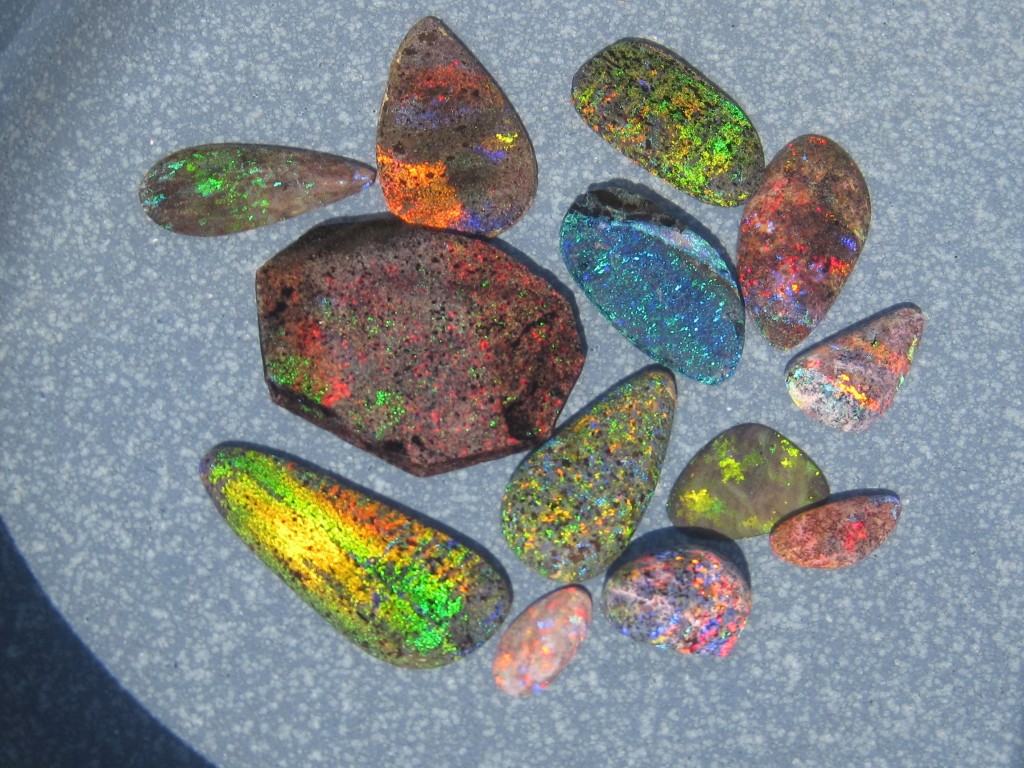
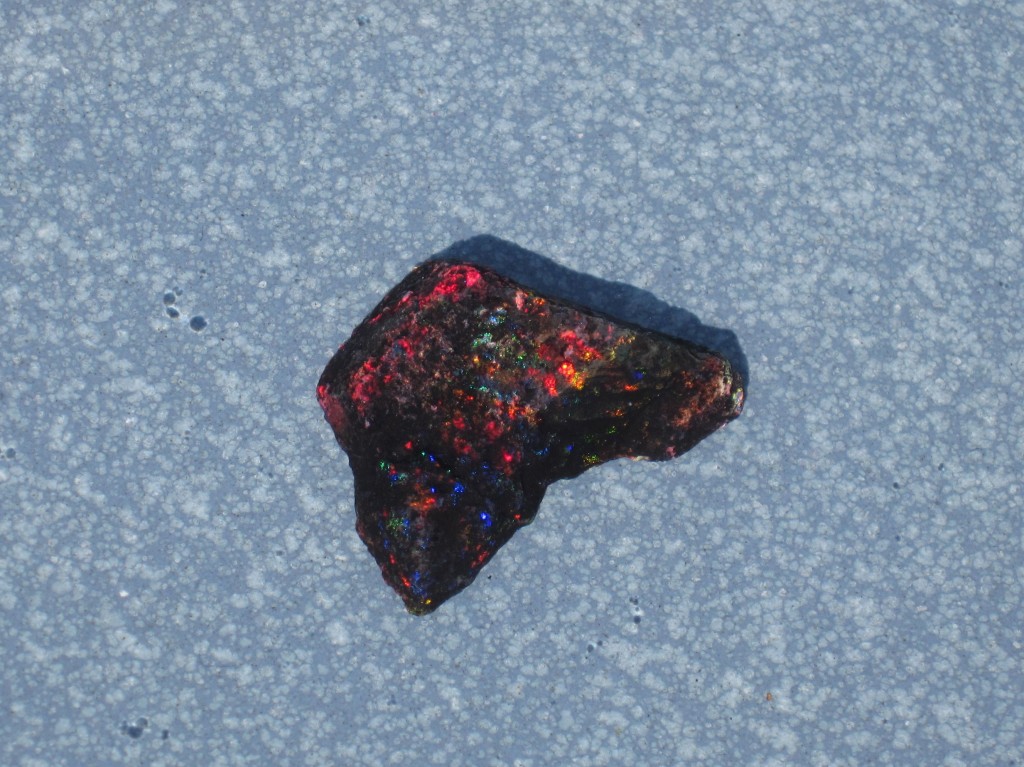
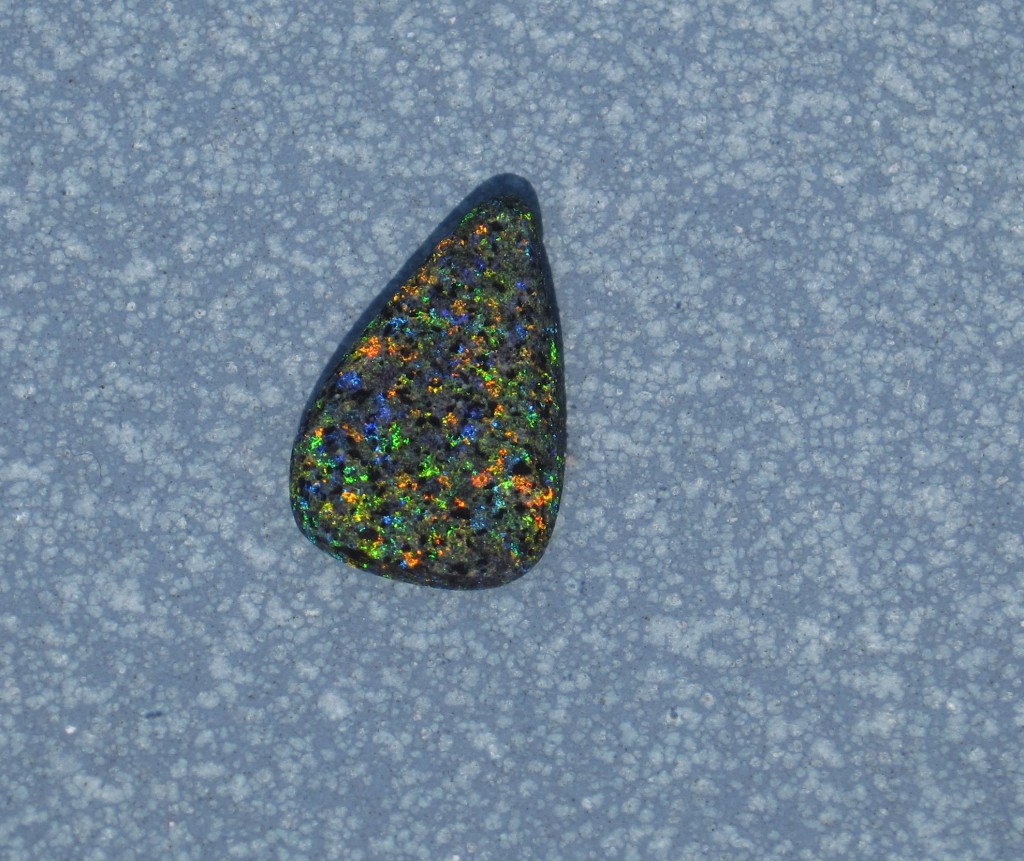
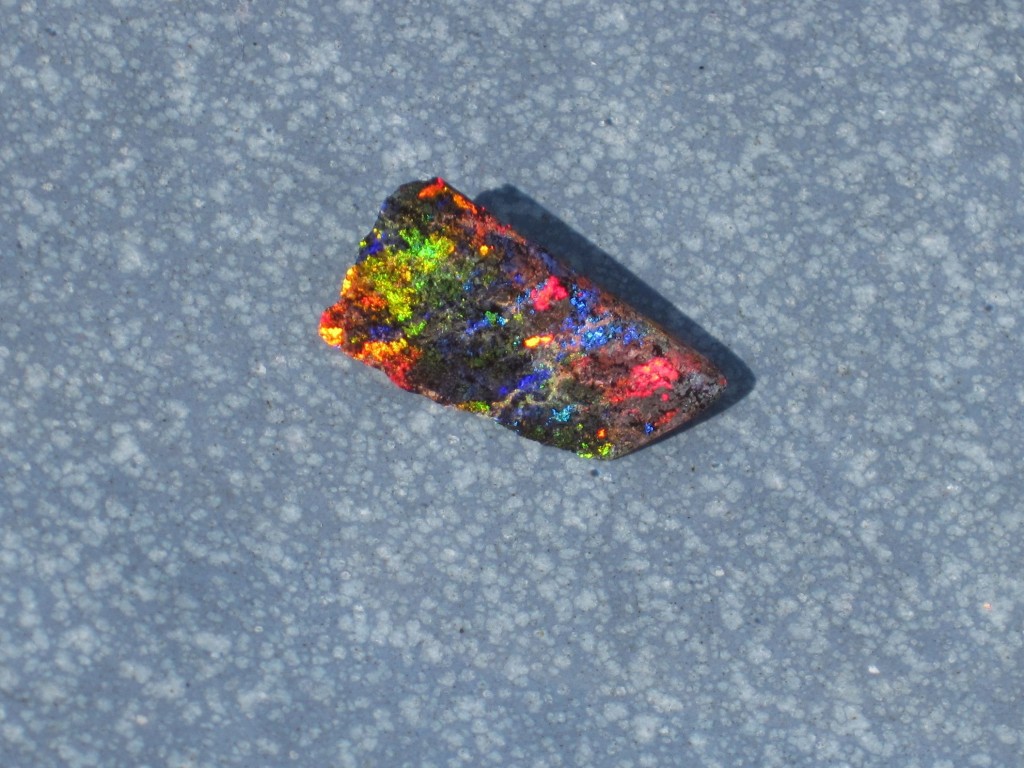
This type of stone makes really beautiful pendants and is usually very affordable.
Some opal purists won't use matrix stones that have to be treated but as the treatment only enhances the colour of the background of the stone and does not change the actual opal composition I can see no objections. In fact it brings to life a stone that was once rejected by miners. This opal is really unique and only found at Andamooka. If you visit Andamooka you will also see that very little is being found now and this stone, as well as all other forms of opal will only become rarer.
Johno